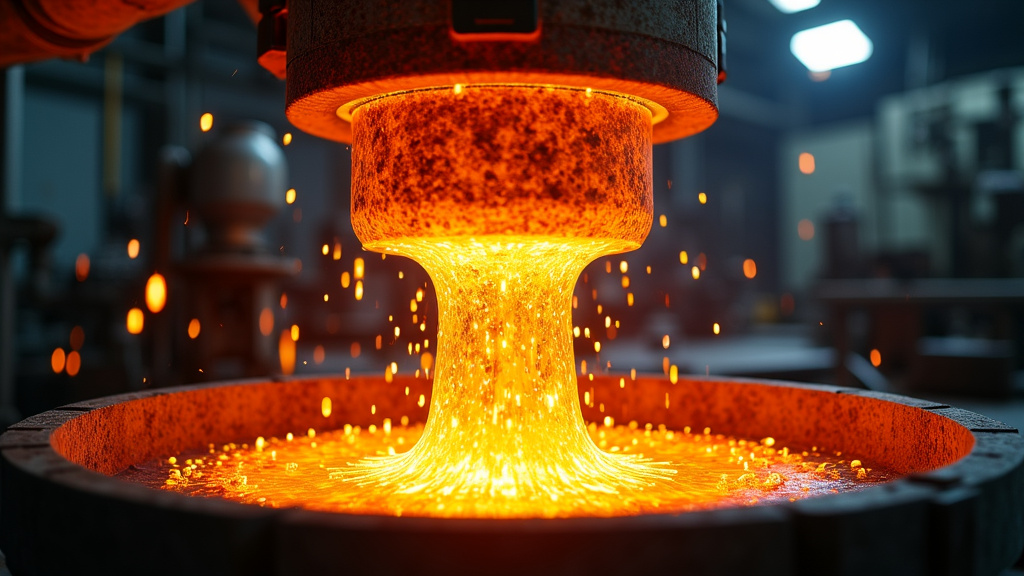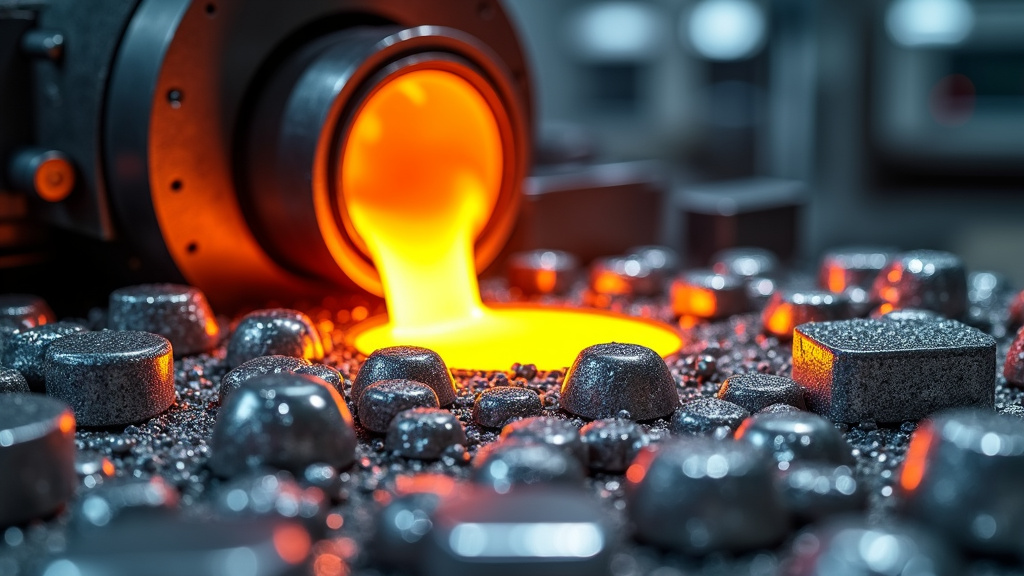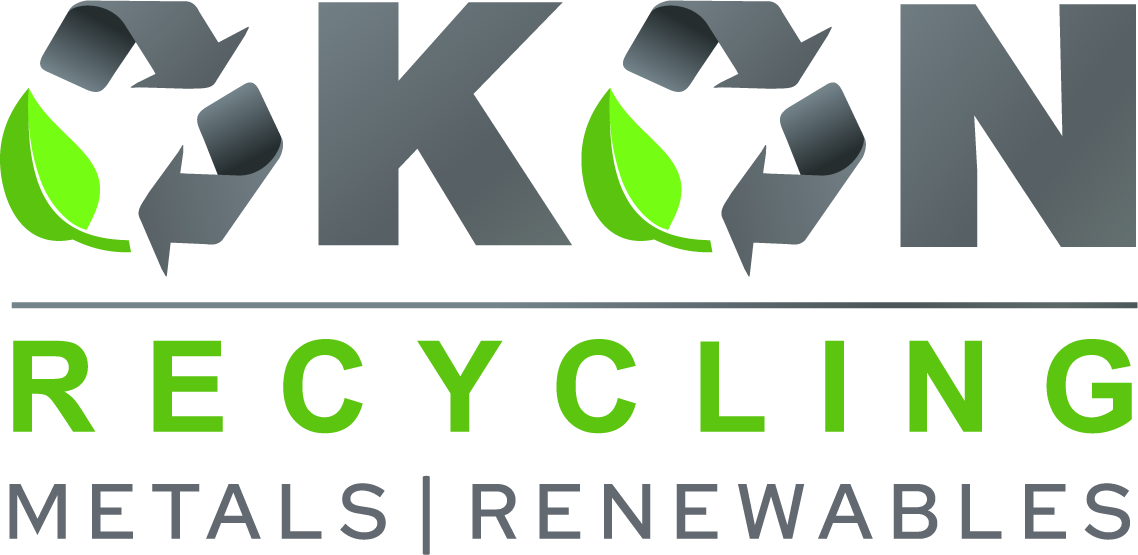5901 Botham Jean Blvd, Dallas, TX 75215
Exploring Green Alternatives to Rare Earth Magnets
February 14, 2025The demand for powerful magnets is expected to increase tenfold by 2030 in the electric vehicle sector alone. This projection highlights a significant challenge at the intersection of technology and sustainability.
As we transition towards a green economy, the need for high-performance magnets is growing. These essential components are vital in applications ranging from wind turbines to electric cars. However, the most potent magnets depend heavily on rare earth elements, leading to environmental and supply chain concerns.
Despite their name, rare earth magnets are not scarce in the Earth’s crust. The real challenge is in their extraction and processing, which often carries a significant environmental cost. Additionally, China’s control over 81% of global rare earth production as of 2017 raises important geopolitical and supply chain stability issues.
This is where innovation plays a crucial role. Companies like Okon Recycling are addressing the challenge by exploring creative alternatives to reduce reliance on rare earth magnets. These efforts are not just about finding substitutes but also about reimagining magnetic technology for a sustainable future.
This article explores the world of green magnet alternatives.
Promising Materials in Green Magnet Design

As the world shifts towards sustainable technologies, researchers are exploring innovative materials to replace rare earth elements in magnet production. Two promising contenders have emerged: iron nitride and manganese aluminum carbide (MnAlC). These materials offer a compelling blend of strong magnetic performance and reduced environmental impact.
Iron Nitride: A Powerful Alternative
Iron nitride, composed of iron and nitrogen, is gaining attention for its impressive magnetic properties. With a maximum energy product (BHmax) of 1150 kJ/m3 and a Curie temperature of 540°C, it outperforms many traditional magnets. Companies like Niron Magnetics in California are investing heavily in this technology, employing teams of materials scientists to fine-tune its properties and production processes.
The appeal of iron nitride lies in its performance and composition. Unlike rare earth magnets, it relies on abundant and inexpensive raw materials, making it an environmentally friendly option that could reduce the carbon footprint associated with magnet production.
However, challenges remain in optimizing iron nitride for commercial use. Researchers are working to improve its stability and develop cost-effective manufacturing techniques at scale. Despite these hurdles, the material shows great promise for applications ranging from electric vehicles to wind turbines.
MnAlC: Reviving a Forgotten Contender
Manganese aluminum carbide, or MnAlC, is experiencing a renaissance in magnet research. Originally commercialized in the 1980s, it fell out of favor with the rise of neodymium magnets. Now, scientists are revisiting this material with fresh perspectives and new techniques.
MnAlC offers several advantages as a magnet material. It’s composed of relatively abundant elements, making it less susceptible to supply chain disruptions. Recent advancements in processing have improved its magnetic properties, bringing it closer to the performance of rare earth magnets in certain applications.
Researchers at the University of Sheffield have made exciting progress with a variant called MnAlGa, where gallium replaces carbon. This modification shows potential for even better magnetic performance, opening up new possibilities for MnAlC-based magnets.
Environmental and Economic Implications
The development of these alternative magnet materials carries significant environmental benefits. A life cycle assessment study found that producing magnets from materials like MnAlC could reduce environmental impacts by up to 95% compared to neodymium-based magnets across various categories, including climate change and resource depletion.
Economically, these materials could help stabilize the magnet market, which has been volatile due to rare earth supply issues. By diversifying the available options, manufacturers can reduce their reliance on a single source of materials, potentially leading to more stable pricing and supply chains.
Ongoing Research and Future Prospects
While iron nitride and MnAlC show great promise, they’re not yet ready to completely replace rare earth magnets in all applications. Ongoing research focuses on several key areas:
- Improving manufacturing processes to increase yield and reduce costs
- Enhancing magnetic properties to match or exceed those of rare earth magnets
- Developing new applications that leverage these materials’ unique characteristics
- Exploring hybrid designs that combine different magnetic materials for optimal performance
Projects like the European Union’s PASSENGER (Pilot Action for Securing a Sustainable European Next Generation of Efficient RE-free magnets) are driving innovation in this field. By bringing together experts from academia and industry, these initiatives aim to accelerate the development and adoption of sustainable magnet technologies.
As research progresses, we can expect to see iron nitride, MnAlC, and other alternative materials playing an increasingly important role in green technology. From electric vehicles to renewable energy systems, these innovative magnets could help power a more sustainable future while reducing our reliance on rare earth elements.
| Material | Maximum Energy Product (BHmax) | Curie Temperature | Environmental Impact |
| Iron Nitride | 1150 kJ/m3 | 540°C | Low, abundant raw materials |
| MnAlC | Similar to some rare earth magnets | Varies | Reduced environmental impacts by up to 95% |
| Neodymium Magnets | Up to 512 kJ/m3 | 310°C | High, due to rare earth extraction |
Innovative Technologies Shaping Non-Rare-Earth Magnets

The magnet industry is undergoing a significant shift as tech companies and researchers explore alternatives to rare-earth materials. This transition is driven by the need for more sustainable and cost-effective solutions in various applications, from electric vehicles to renewable energy systems.
Advanced production techniques are at the forefront of this transformation. Companies like Niron Magnetics have developed innovative processes for mass-producing high-performance, rare-earth-free permanent magnets. These breakthroughs promise to transform industries reliant on magnetic technologies.
University-business collaborations are accelerating the development of non-rare-earth magnets. For instance, Niron Magnetics has partnered with General Motors and Marquette University to create next-generation electric vehicle drivetrains using rare-earth-free materials. This $5 million project, funded by the Department of Energy, exemplifies the power of academic-industrial partnerships in driving innovation.
Cutting-Edge Production Techniques
Researchers are exploring various methods to create powerful magnets without relying on rare-earth elements. One promising approach involves the use of iron nitride (α″-Fe16N2) as a base material. This compound offers high saturation magnetization comparable to rare-earth magnets but faces stability challenges at high temperatures.
To overcome these hurdles, scientists are employing advanced manufacturing processes. Spark plasma sintering (SPS) has shown potential in consolidating Fe-N powder into bulk material at low temperatures, preserving the desirable magnetic properties of α″-Fe16N2.
Another innovative technique gaining traction is additive manufacturing or 3D printing of magnetic materials. This method allows for the creation of complex magnet shapes and structures, optimizing performance for specific applications while minimizing material waste.
Cost Efficiency and Accessibility
The shift towards non-rare-earth magnets is driven in part by the need for more cost-effective and accessible solutions. Rare-earth elements, while powerful, are subject to supply chain volatility and geopolitical tensions. By developing alternatives, companies aim to reduce dependence on these scarce resources.
Researchers at the National High Magnetic Field Laboratory (MagLab) are actively working to address supply chain challenges for advanced superconductors, which are crucial for high-field magnets. Their efforts include developing sustainable business models for manufacturing these materials, ensuring long-term availability and affordability.
The Advanced Manufacturing Collaborative (AMC) facility, a joint venture between the Department of Energy, Savannah River National Laboratory, and the University of South Carolina Aiken, represents another step towards accessible and innovative magnet technologies. This 60,000-square-foot facility will provide space for advanced manufacturing research and development, fostering collaboration between academia, industry, and national laboratories.
Promising Partnerships and Success Stories
The collaboration between Niron Magnetics, General Motors, and Marquette University stands out as a prime example of successful academic-industrial partnerships. This team is working to develop electric vehicle drivetrains using rare-earth-free materials, potentially transforming the automotive industry.
Another noteworthy partnership is between High Temperature Superconductors, Inc. (HTSI) and Advanced Conductor Technologies (ACT). Their collaboration aims to accelerate advancements in high-temperature superconductor cables for applications in fusion, high-field magnets, and next-generation electrical machines.
These partnerships demonstrate the power of combining academic expertise with industrial resources to drive innovation in magnet technology. As these collaborations continue to flourish, we can expect to see more breakthroughs in non-rare-earth magnet development, paving the way for a more sustainable and efficient future in magnetic technologies.
| Property | Rare-Earth Magnets | Non-Rare-Earth Magnets |
|---|---|---|
| Strength | High | Moderate |
| Size | Compact | Larger |
| Temperature Resistance | Maintains strength in high temperatures | Can lose strength in high temperatures |
| Versatility | High, with various alloys available | Limited |
| Remanence | High | Low |
| Coercivity | High | Low |
| Energy Product | High | Low |
| Curie Temperature | Low for Neodymium, high for Samarium-Cobalt | High |
| Cost | High | Low |
Impact of Geopolitical Challenges on Rare Earth Supply
![]()
China’s dominance in the rare earth elements (REE) market is a pressing geopolitical concern, posing significant supply chain risks for industries worldwide. As of 2022, China controlled approximately 62% of global rare earth mining, 85% of processing capacity, and 92% of magnet production. This concentration of power in one nation’s hands has far-reaching implications for global trade and industrial development.
Rare earth elements, despite their name, are not particularly scarce in the Earth’s crust. However, their extraction and processing are complex, costly, and often environmentally damaging. These 17 elements are crucial in many high-tech applications, from smartphones to electric vehicles and military hardware.
The geopolitical risks associated with China’s REE monopoly became apparent in 2010 when Beijing temporarily halted rare earth exports to Japan during a territorial dispute. This incident sent shockwaves through global supply chains and highlighted the vulnerability of industries reliant on these critical materials.
Supply Chain Vulnerabilities
The impact of China’s REE dominance extends far beyond its borders. In the United States, for instance, the Department of Defense found itself in a precarious position when it was revealed that the F-35 fighter jet, a cornerstone of American military technology, relied on magnets containing Chinese rare earth materials.
This dependence on a potential geopolitical rival for critical components raises serious national security concerns. It’s not just the defense sector at risk; consumer electronics, renewable energy technologies, and automotive industries are all vulnerable to supply disruptions or price manipulations.
Global Efforts to Diversify Supply
Recognizing the urgent need to secure alternative sources, many countries and companies are working to develop rare earth supply chains outside of China. Australia has emerged as a significant player, increasing its mining output to about 12% of global production. The United States has also ramped up efforts, with its share rising to approximately 10% in recent years.
| Country | Production Capacity (Metric Tonnes) | Processing Capacity (%) |
| China | 240,000 | 85 |
| United States | 43,000 | Limited |
| Australia | Not specified | Limited |
| Malaysia | Not specified | Limited |
However, mining is only part of the equation. The processing and refining stages remain heavily concentrated in China, creating a bottleneck that’s difficult to overcome. Establishing new processing facilities requires substantial investment and expertise, both of which have been lacking outside of China for decades.
Innovative Solutions and Challenges
As industries seek ways to secure their supply chains amidst global uncertainties, several strategies are being explored:
- Recycling and urban mining: Extracting rare earths from electronic waste and industrial byproducts.
- Developing alternative materials: Researchers are working on substitutes that could reduce dependence on rare earths.
- Improving extraction technologies: New, more environmentally friendly methods of mining and processing are being developed.
- International collaborations: Countries are forming partnerships to pool resources and knowledge in rare earth production.
Despite these efforts, significant challenges remain. Establishing a competitive rare earth industry outside of China requires overcoming environmental concerns, high costs, and a lack of specialized expertise. Moreover, China’s strategic advantage in the sector has been built over decades, making it difficult for newcomers to catch up quickly.
The geopolitical challenges surrounding rare earth supply chains underscore the need for a multi-faceted approach to ensure global industrial security. As nations and industries grapple with these complexities, the race to secure reliable sources of these critical materials will likely shape international relations and industrial strategies for years to come.
Conclusion: Paving the Way for Sustainable Magnet Solutions
The shift away from rare earth magnets is no longer optional—it’s essential for a sustainable future. Environmental concerns and supply chain risks make finding alternatives and improving recycling practices urgent priorities.
Okon Recycling is leading this transition by recovering valuable materials from discarded electronics and industrial equipment, reducing the need for new mining while supporting the growth of green technologies. Their efforts prove that a circular economy for magnets is both achievable and profitable.
Innovations in alternative magnetic materials and advanced recycling processes are paving the way for a rare earth-free future. As consumers and industry leaders, we can drive this change by supporting sustainable companies and prioritizing recyclable products.
Now is the time to embrace smarter, greener solutions. To learn how you can contribute to sustainable magnet recycling, contact Okon Recycling at 214-736-9509 or explore local e-waste programs. Together, we can build a cleaner, more resilient future.
